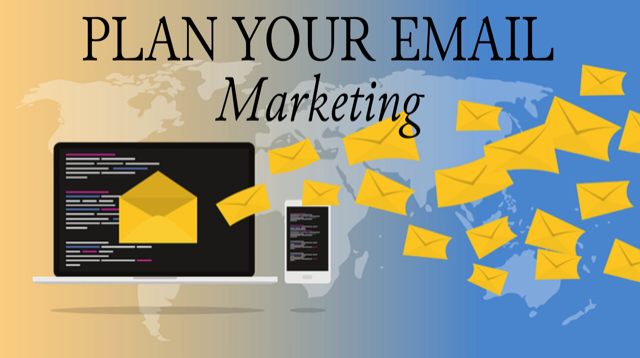by Carolyn Edlund
Ready for an email marketing strategy? Here’s how and when to reach out to your audience.

Email marketing is one of the most effective ways to build an audience and grow your art business. But many artists never get started, or don’t follow through because they’re not sure how to create messages that connect, or how often to write.
Paramount to a successful email marketing strategy are 1) consistent outreach and 2) messaging that emotionally resonates with your subscribers.
Staying Consistent
The best practice is to send an email campaign to your list at least once a month. If you fail to stay in front of your audience on a regular basis, you will risk being forgotten. Some months are busier than others, so you may send emails 30 days apart at times and communicate more frequently when you have a big announcement or an upcoming sale. Using a marketing calendar can keep you focused, motivated and accountable for reaching your goals.
Review your sales history to determine your best selling season and plan greater outreach at that time. Consider whether holidays are relevant to what you make (for example, if your work is perfect as a Father’s Day gift) or if there are other meaningful dates that matter to your audience.
Regardless of your individual marketing schedule, the most important thing is to simply send emails—and keep sending them. It takes time to establish a rhythm and regular practice, but patience and persistence is key to success. If you go silent for a while, it can be hard to get motivated to reestablish communication. Complete your marketing calendar and commit to a schedule. If you miss a month, send the next campaign out and keep going.
Connecting Emotionally
Developing a subscriber base and attracting collectors is all about building relationships. Let your subscribers know there is a real human reaching out to them. This is a perfect opportunity to write in a conversational tone that speaks to the recipient on a personal level, in a respectful and friendly way. You may find that you receive replies from individuals with whom your emails resonated.
What do email subscribers want to read? If they signed up for your list, they were intrigued by what you do, which is a good starting point. We know what people care about most—themselves. Art purchases are made at the intersection where your work meets with what the collector cares about or values.
How does the work you do as an artist reflect the interests or desires of your audience? Why does your art matter to them? The answer to those questions is a core part of your brand story. A solid brand story is the underpinning for your marketing messages. Learn more about writing your brand story here.

Artist Mia Bailia has a niche audience for her work. Shown is “Garden of Ice” 24″x36″ Acrylic on Canvas of Margerie Glacier in Glacier Bay National Park, Alaska.
Some artists may include helpful information in their email campaigns, such as how to hang or display art. Others might share photographs and stories that inspired their latest series of landscapes. Or, they could talk about a fascinating or unusual technique of making art. By virtue of being an artist, you are interesting to many people. Use your story to form a closer connection over time.
If your work relates to a cause that you are passionate about, it’s likely you have that in common with your subscribers. Artist Mia Baila creates paintings focused on glaciers that are melting and retreating. Her audience cares deeply about climate change, and the repercussions of global warming. Emails that document her travels and the glaciers she is tracking would be perfectly on point for her list.
Types of Messages
Overall, you will send two different types of emails to your list: promotional and non-promotional. People get burned out when they constantly receive sales pitches. The conversational messages that make up most of your campaigns and create an emotional connection are non-promotional. But every once in a while, you will want to remind your readers that you have artwork for sale.
Promotional emails are time sensitive. You may provide information about a new collection of your art, announce a special sale or invite your subscribers to an upcoming event such as an exhibition, studio sale or art fair. These are sales-driven messages that should have a clear Call to Action with buttons, images to click or prominent links.
As you grow your audience and communicate consistently over a course of months, you will build that ever-important relationship and become memorable to your audience. Using a mix of informational and promotional messages ensures that email recipients will be primed for a buying opportunity when it is presented.
Send out email campaigns on a regular basis with messages that resonate, while sprinkling in occasional sales-focused promotions. Over time this will help you gain the trust of people who are a natural fit for your work, while offering them a chance to acquire your art.


Really great article, Carolyn!! Thank you very much for mentioning my work.
Thanks, Mia. You are a perfect example of an artist with a niche following. These are some of the easiest audiences to develop messaging for!